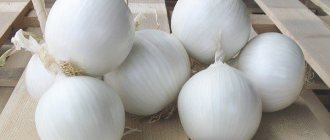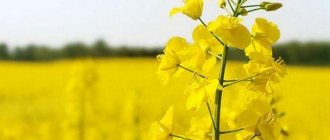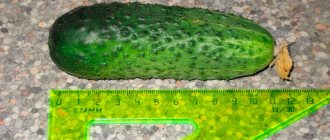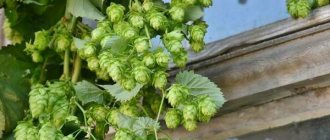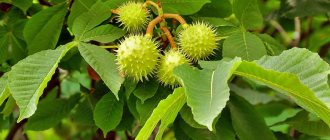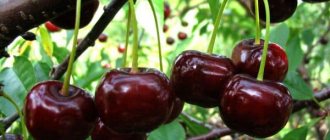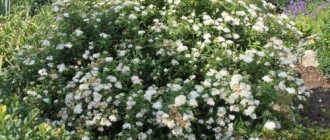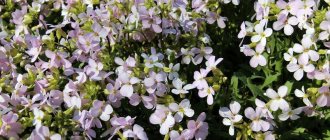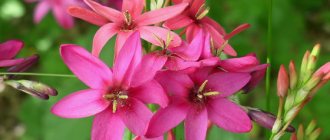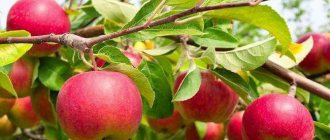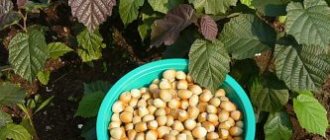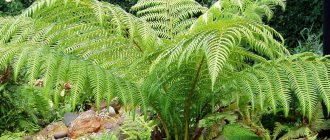Many gardeners prefer to grow Sturon onions in their beds. It is believed that this variety has increased resistance to diseases and severe frosts. It is valued for its ease of care and ease of cultivation. But you can get a good harvest only if you follow several important rules.
Bow Sturon
Onion Sturon (pack of seeds with sowing diagram)
Bow "Sturon". Characteristics of the variety
Description of the variety
The Dutch variety Sturon is easy to care for and has a long shelf life of the bulbs. Recommended for cultivation as a biennial or annual crop. It is grown from nigella or sets.
Reference! Nigella are the seeds of ordinary onions, from which you can grow full-fledged onions.
The culture is resistant to bolting. The height of the feathers is 40-45 cm, the color is bluish-green. The flower shoots left to produce nigella stretch up to 1.5 m. When opened, the inflorescence forms a white ball. The seed capsule contains up to six seeds.
Origin and development
This is a relatively young culture, but already widely known in many countries. The variety was included in the State Register of Breeding Achievements of Russia in 2009.
It can be grown both for personal farming and on an industrial scale.
Chemical composition, vitamins, microelements and beneficial properties
The chemical composition of onions is extremely rich for a relatively small vegetable.
Macroelements per 100 g:
- calcium (30 mg);
- magnesium (15 mg);
- potassium (170 mg);
- phosphorus (56 mg).
Microelements per 100 g:
- iron (0.8 mg);
- zinc (0.8 mg);
- fluoride (30 mcg);
- boron (200 mcg);
- iodine (3 mcg);
- manganese (0.23 mg);
- chromium (2 mcg).
Protein content per 100 g – 1.5 g; fat – 0.2 g; carbohydrates - 8.2 g. The presence of vitamins such as vitamin C, a complete group of vitamins B, E and PP makes onions a biologically valuable product. It also contains phytoncides and polysaccharides.
Reference! Phytoncides are volatile substances that inhibit the growth of pathogenic microorganisms. To restore the human body’s defenses, it is enough to inhale onion vapor for 30 minutes.
Ripening period
The ripening period is average, the growing season lasts 110-120 days.
Productivity
Productivity depends on the composition of the soil and growing conditions. Average indicators vary between 250-350 c/g or 2.5-3.4 per 1 sq. m. At the time of harvesting, the share of ripe vegetables reaches 70-75%. After ripening, ripeness is 100%.
Disease resistance
The culture is endowed with increased immunity to fungal and viral diseases. But with improper care, rot and downy mildew can occur. Excess moisture leads to disease. Frequent fertilizing also makes the crop vulnerable.
Reference! Applying fertilizers in large doses makes the emerging bulbs larger, but reduces the plant's immunity. Also, an excess of fertilizers reduces shelf life and nutritional value.
Characteristics of the bulb, taste and appearance
The bulbs are large, average weight from 180 to 220 g. The shape is slightly elongated, the neck of the bulb is thin. Onion scales are dense, yellow-brown in color.
The variety has a spicy and pronounced taste. It is great for preparing fresh salads, first and second courses, especially for frying.
This is interesting! The sugar content in an onion reaches 6% - this is more than in a pear. This is the reason why onions taste sweet after frying.
The photo shows the onion variety Sturon.
Suitable regions and climate
Despite the average ripening time, the culture has taken root in many regions. The Central and West Siberian regions are considered the most favorable in terms of climate and soil composition.
The plant is cold-resistant and can withstand minor frosts. The soil suits it is loose and fertile; light loam is considered ideal.
Diseases and pests
Despite the fact that onions have increased resistance to various diseases, they can be susceptible to the following diseases:
- Mosaic. This is a viral disease. When infected, yellow spots appear on the leaves. Next, the aerial parts gradually die off, and the fruits become very small, their shelf life is significantly reduced. It is almost impossible to fight this disease.
- Cervical rot. A disease that can appear during vegetable storage. You can combat the problem if you get rid of the affected bulbs in a timely manner.
- Downy mildew. This disease manifests itself as characteristic spots on the leaves. Gradually the spots begin to grow. This leads to the fact that the fungus settles in the bulbs, which can cause the entire crop to die.
Onion disease - Mosaic
Cervical rot
Downy mildew (downy mildew) of onions
This disease spreads over a short period of time, so it is recommended to immediately get rid of infected plants. Treat the remaining harvest with special preparations - Fitoplus and Fitosporin-M. It is difficult to get rid of such a disease. It is very important to carry out preventive treatments in a timely manner, pre-treating the material for planting.
Often onions suffer from nematodes. You can fight worms with the help of effective drugs Phosfamide and Mercaptophos.
Advantages and disadvantages
Many gardeners note a number of advantages of the crop, especially its unusual taste, which perfectly complements any dish.
The advantages also include:
- ease of care;
- disease resistance;
- high productivity;
- planting in cold regions;
- marketable condition;
- long storage.
The disadvantages include a decrease in yield due to improper care. The soil composition also affects the yield volume: dense or poorly drained soil will reduce crop productivity.
What is the difference from other varieties
Long shelf life sets Sturon apart from other varieties. At a humidity of 70% and a room temperature of 2-3℃, the bulbs retain their taste and presentation for 7-8 months. The ability of onions to grow in almost any region of Russia is also appreciated.
Recommendations for storing planting material
If the seed was purchased in the fall, then in order for it to retain its properties, it must be stored under certain conditions. Experienced farmers perform a special procedure to prevent onions from rotting or being damaged by diseases. They heat the onions at a certain temperature in four stages. During the first week, the planting material is heated at a temperature of 25 degrees, during the second - 30 and during the third - 35 degrees. The last stage lasts about 10 hours, and the temperature should be 40 degrees. After warming up, the seed is sent for storage. To do this, use a dry room with good ventilation. It is necessary to store the seedlings at a room temperature of 18 to 20 degrees and a humidity level of no more than 70 percent.
Features of planting and growing
Most often, the variety is grown using the two-year method. To do this, Sturon onion seeds are first sown to obtain sets, and in the second year the sets are planted to obtain marketable bulbs.
When is the best time to plant greens?
You can plant Sturon onions on greens throughout the year. In winter, a greenhouse is suitable for this, and in warm weather it is planted in open beds. When planting with sowings, further care is reduced to a minimum. It is much more difficult to grow onion feathers from seeds. Seeds take longer to germinate and require more attention.
Is it possible to plant before winter?
Many people are interested in the question of whether it is possible to plant Sturon onions before winter. Yes, you can, this is a common practice.
Planting before winter is carried out at the end of September - beginning of October, depending on the region. The main thing is that there are at least three weeks left before the onset of frost. Winter onion sets Sturon for sowing choose the smallest ones, no more than 1 cm.
Soil requirements
For full development, the culture requires loose and nutritious soil. The soil is dug up twice, the first time in the fall with the addition of humus or chicken droppings. To further saturate the soil, wood ash is added. In addition, ash destroys many pathogenic microorganisms. During spring digging, before planting, chicken manure is also added to the beds. For lightness, washed river sand is added to the soil.
The beds are organized in a sunny area with deep groundwater. Lack of sunlight will negatively affect the formation of bulbs.
Preparation of seed material and planting dates
Nigella (seeds) are sown in late March - early April. Direct sowing into the ground is carried out only in the southern regions. In other cases, the crop is grown through seeding.
Before sowing, the seed material is germinated. The growth stimulator “Epin” is added to a glass of warm water and the seeds are placed in the prepared solution for a day. Then put it on a damp cloth and leave it for three days in a warm place.
Sow to a depth of 2 cm in well-warmed soil . Leave 20-30 cm between rows. When planting densely, seedlings are thinned out so that the distance between seedlings is at least 10 cm.
Sturon onion sets are planted before winter and in spring. Spring sowing begins no earlier than mid-April or early May. 3-4 days before planting, the seedlings are heated near the radiator, so it will sprout faster. Immediately before sowing, the planting material is soaked for 30 minutes in a weak solution of potassium permanganate for disinfection.
Landing is carried out in clear weather. The depth of the planting holes is no more than 4 cm, the distance between them is 15-20 cm. Place a little wood water at the bottom of the hole and fill it with water. After planting, do not water.
Reference! The signal to start sowing for all regions is the flowering of bird cherry. Bird cherry will not bloom in case of return frosts.
Features of cultivation
Caring for the crop is not difficult. The main thing is to create optimal conditions for full development, namely: drainage and air permeability of the soil.
Watering mode
In the first half of the growing season, the crop requires regular and abundant watering. But there is no need to create stagnation of moisture: this will lead to the formation of fungal diseases. In addition, the developing bulbs can rot. From July, water only when the top layer of soil is very dry, but frequent loosening is carried out.
Loosening the soil and weeding
For full development, onions need access to oxygen - for this, loosening is carried out. The soil is loosened to a depth of 3 cm, otherwise there is a risk of damaging the roots.
The beds are weeded so that weeds do not take away nutrients and interfere with the growth of seedlings. Weeds also retain pathogenic spores that are dangerous to the plant.
Feeding
The crop is fed twice during the entire period. The first feeding consists of potassium and calcium nitrate. One tablespoon of each drug is dissolved in 1 bucket of water. The plant is fed the second time as soon as 5-6 leaves are formed, using phosphorus-potassium fertilizers. It is not recommended to apply fresh manure.
Disease and pest control
The onion fly sucks the juice from the leaves, causing the plant to wilt. The larvae of this pest are no less dangerous. To combat flies, salt and tobacco dust are used. The salt solution is prepared simply: dissolve 200 g of salt in 10 liters and carefully water each seedling. And tobacco dust is sprinkled between the rows; its pungent smell repels insects.
Downy mildew (downy mildew) affects the plant at all stages of development. Fungal disease leads to decreased yield and short shelf life of bulbs. Compliance with crop rotation rules and the use of healthy seed material reduces the risk of developing the disease.
To prevent planting, spray with a 1% solution of Bordeaux mixture. When the disease appears, stop watering and spray the seedlings with a solution of copper sulfate.
Important. If you pick green feathers for food, keep in mind that pests and fungal spores penetrate into the resulting sections.
Planting a vegetable
You can get a big harvest only by choosing the right planting material. You can buy onion sets in the store or grow them from seeds yourself. It must have large dimensions of at least 2 cm and a flat surface. It is strictly prohibited to plant seedlings with the following defects:
- green arrows or small roots;
- signs of decay;
- signs of pest or disease exposure;
- various mechanical damages;
- a lot of moisture on the bulbs.
Plant the vegetable in early spring. Landing rules:
- The vegetable is grown on sandy loam or slightly acidic soils.
- At the end of November, humus and rotted manure are added to the soil for digging, and mineral fertilizers are added just before planting.
- The neck of the bulbs is carefully cut off so as not to damage the sprouts.
- Two days before planting, remove weeds, loosen the soil and dig trenches at a distance of 20 cm from each other.
- Deepen the seedlings into the soil by 2-3.5 cm. Each bulb is located at a distance of 10-15 cm from each other.
Harvest and storage
The harvest is harvested in the second half of July. Yellowed feathers serve as a signal for collection. Cleaning is carried out in the morning, in clear weather. The turnip dug out of the ground is left on the site until the evening.
Storage conditions
After drying, the onions are placed in a dry, well-ventilated area. Lay out in no more than one layer or tie into bundles for hanging. After the tops dry, they are cut off or braided. Long roots are trimmed carefully without damaging the bulb. The optimal temperature for long-term storage is 2-4℃.
Onion Sturon: planting before winter
Winter storage of seedlings requires special rooms with a special microclimate: moderately dry, with low humidity, well ventilated. Summer residents, who transport their entire harvest to city apartments in September-October, simply have nowhere to store large supplies. Even the happy owners of garage pits are not in the best position: in damp and cool pits, the Sturon onion variety is unlikely to last even until the New Year.
Winter sowing
Recently, autumn sowing of many vegetable crops has become fashionable. Including winter varieties of onions. This is due, first of all, to the unstable spring weather, which often prevents the beds from being sowed on time. This means getting a good harvest. This is especially true for the northern regions and the so-called risky farming zones.
Difficulties encountered during cultivation
When groundwater lies close to the surface, onions are grown on raised ridges. Otherwise there is a risk of them rotting.
If fertilizers were not applied during the autumn digging, then in the spring they saturate the soil with all components, using a full range of minerals. The soil especially needs nitrogen, phosphorus and potassium.
The best predecessors for onions are cucumbers, tomatoes, early cabbage and greens. After them, the land will retain its fertility and necessary nutrients.
Sowing seeds for growing sets
In the first year, nigella is sowed. This will provide material for growing crops for the second year.
Timing of sowing seeds
The best time for the procedure is March - April (specific dates depend on the climate zone).
Planting seeds
Sowing seeds does not take much time and does not require much effort. Perform the following actions:
- The seeds are soaked in water at room temperature for a couple of hours; before that, it is recommended to sort them out.
- Furrows with a depth of no more than 5 cm are prepared in the garden bed; approximately 10 cm are left between the rows.
- It is recommended to water the soil.
- After the moisture has been absorbed, seeds are sown (up to 90 pieces per 1 m).
- At the end, the grooves are covered with earth and compacted a little.
Reviews about culture
Reviews about Sturon are numerous and positive. Almost everyone who grows this crop is satisfied with the result:
Irina, Penza: “Last year I decided to plant Sturon winter onions. I planted a small amount in the greenhouse. Overall I was satisfied. The plant is unpretentious, caring for it is very simple. I watered it infrequently, but carried out preventive measures against fungal diseases. The culture turned out to have strong immunity and did not get sick. Now I will plant in the spring to get a marketable harvest.”
Lyudmila, Bryansk: “I’ve been growing it for more than one year. For planting I use only purchased seedlings. The culture is high-yielding and unpretentious. Onions are large and sweet, suitable for salads, first courses and side dishes, and for winter preparations. The culture is resistant to diseases and pests, but for preventive purposes it was treated twice with Fitosporin. I applied fertilizing only once, but the harvest was still great: I collected at least 2.5 kg per square meter.”
Features of care
Sturon onions are easy to care for, but you need to follow a few simple rules that will help you get a better harvest.
After the bulbs take root, you need to remove the unnecessary ones, leaving about 30 pieces per linear meter. The sprouts are watered once a week at the rate of 10 liters of water per 1 square meter. m. Irrigation is not carried out in rainy weather.
A couple of weeks after the excess heads have been removed, you can fertilize with ammonium nitrate (25 g per 1 sq. m). After another week, liquid fertilizers are used for spraying. It is important to loosen the soil to ensure access of air and nutrients to the bulbs. Before harvesting, be sure to remove weeds so that they do not interfere with the normal growth of the crop.
If the rules are followed, Sturon can be stored for about 9 months.
Description and characteristics of the Dutch onion variety
Sturon onions are distinguished by large heads with a thin neck and a small bottom. The weight of a ripe onion can reach 210 grams. It has an ellipsoidal fruit shape . Housewives note the ease of cutting. The top is covered with several layers of dry yellow scales. Narrow longitudinal stripes of brown color stand out against a golden background. The inner layers are juicy, fleshy, dense, white with a greenish tint.
Refers to mid-season varieties. The ripening period is 100-115 days from the moment of emergence. Well kept. Shelf life is up to 9 months. This quality is especially valued by farmers and housewives.
The yield is 30-35 tons per hectare . Sturon rarely bolts, which makes it stand out from other varieties. This quality is highly valued by gardeners. The absence of arrows allows the bulbs to gain mass.
Resistant to most diseases.
By choosing the specified onion variety for planting, farmers can rest assured about the harvest. They will not need to spend additional money on chemicals and time for processing plantings. Reference! Sturon onions tolerate cold well and are suitable for growing in the northern and central regions.
The taste is piquant, richly bitter, the smell is tart, pungent . Used in many dishes and preparations. However, due to the bitter taste, only a small amount of onion is used in fresh salads.
